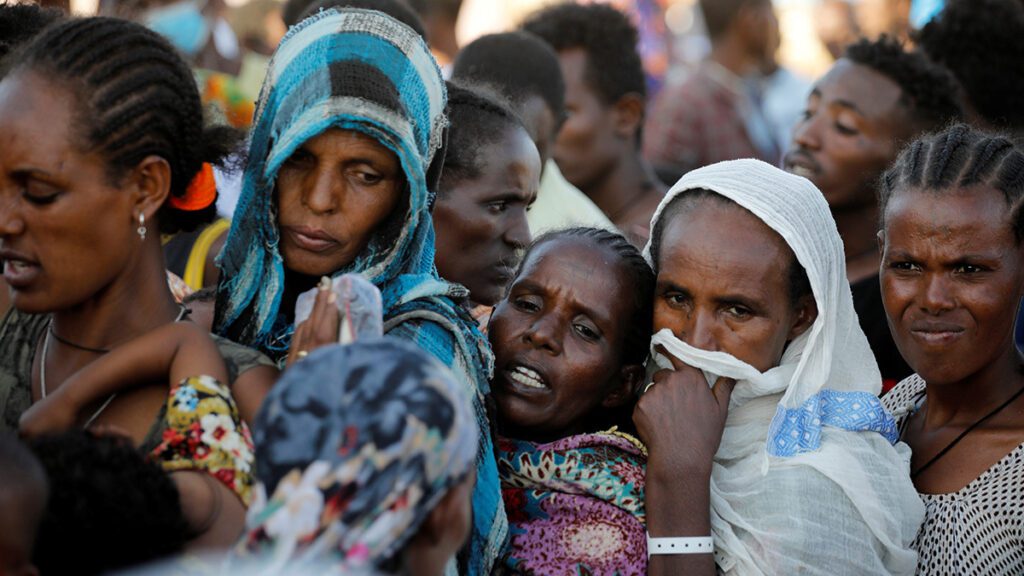The ethnic conflict in Ethiopia is explored in this content, highlighting its long-lasting implications for stability in the Horn of Africa. The historical context of Ethiopia’s diverse ethnic groups and power dynamics is discussed, as well as the root causes of the conflict including political competition, ethnic divisions, and economic disparities. The content emphasizes the implications of the conflict for stability, such as mass displacement and the potential for regional destabilization. A way forward is proposed, focusing on inclusivity, equitable development, and international support. The conclusion highlights the challenges and potential for a more peaceful future in Ethiopia and the region.
The Ethnic Conflict in Ethiopia: Exploring Long-lasting Implications for Stability in the Horn of Africa
Introduction
Ethiopia, a diverse country in the Horn of Africa, has been marred by an ongoing ethnic conflict that poses significant implications for both its stability and the wider region. The country’s intricate history, ethnic divisions, and political dynamics have fueled the conflict, leading to a multitude of challenges that Ethiopia must navigate to achieve long-term stability.
Historical Context
Ethiopia’s history is marked by a complex tapestry of different ethnic groups, each with its own distinct cultural, linguistic, and religious characteristics. Historically, power has been concentrated in the hands of a few dominant ethnic groups, such as the Amhara and Tigrayans. This marginalization of other groups has created deep-seated grievances that have fueled ethnic tensions and, ultimately, the conflict we see today.
Root Causes of the Conflict
The ethnic conflict in Ethiopia stems from a variety of root causes. First and foremost, political competition and the struggle for power between different ethnic groups have played a significant role. The Ethiopian People’s Revolutionary Democratic Front (EPRDF), a coalition of ethnically based parties that ruled Ethiopia for nearly three decades, implemented a policy known as “ethnic federalism.” While this model aimed to decentralize power and protect minority rights, it also exacerbated ethnic divisions and created a competitive environment where different groups vied for resources and political influence.
Economic disparities and competition for land and natural resources have also fueled tensions. Ethiopia’s rapid economic growth, driven primarily by large-scale infrastructure projects, has concentrated wealth in certain regions. This has led to perceived inequalities and resentment among marginalized groups who feel excluded from the benefits of development.
Implications for Stability
The ethnic conflict in Ethiopia has far-reaching implications for stability in the Horn of Africa. Firstly, the country’s internal strife has resulted in mass displacement and humanitarian crises. This not only poses immediate challenges for Ethiopia but also places a burden on neighboring countries as they struggle to accommodate refugees and manage cross-border tensions.
Furthermore, the conflict has the potential to spill over into neighboring countries, exacerbating regional dynamics. Ethiopia is a key actor in the region, both politically and economically, and its instability could have a ripple effect on neighboring nations. The Horn of Africa, already facing numerous security challenges, cannot afford further destabilization.
A Way Forward
Addressing the ethnic conflict in Ethiopia requires a multi-faceted approach. It starts with recognizing the importance of inclusivity and ensuring that all ethnic groups have a meaningful stake in political decision-making. This necessitates reforms that promote power-sharing, inclusivity, and citizen participation.
Economic policies should also prioritize equitable development and address the underlying socio-economic grievances that fuel the conflict. Investments in education, job creation, and infrastructural development in marginalized areas can help bridge the economic gap and promote social cohesion.
Additionally, regional and international actors must support Ethiopia’s efforts towards stability. Diplomatic engagement, conflict resolution mechanisms, and coordinated efforts to address the root causes of the conflict are essential for long-lasting peace.
Conclusion
The ethnic conflict in Ethiopia presents significant challenges for both the country and the wider Horn of Africa region. Achieving stability necessitates addressing the root causes of the conflict, promoting inclusivity, and prioritizing equitable development. With concerted efforts from all stakeholders, Ethiopia has the potential to overcome its ethnic divisions and pave the way for a more peaceful and prosperous future.
